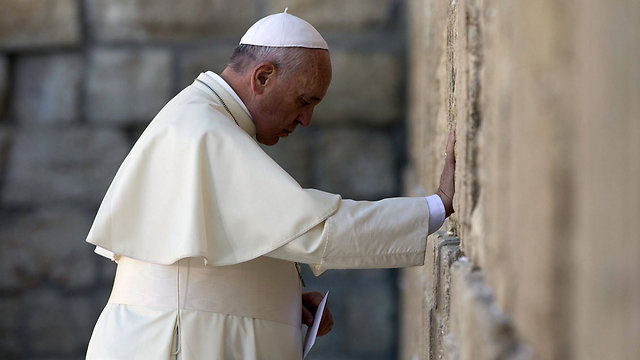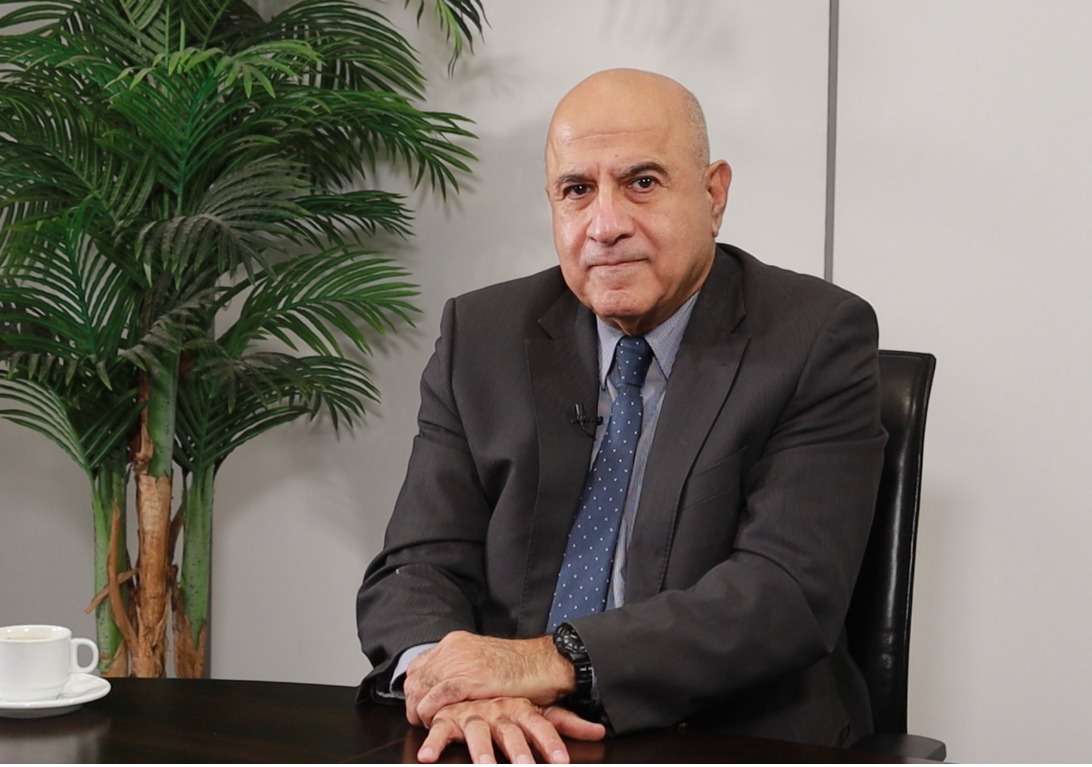Is the Pope Ending Catholic Anti-Semitism?
Susan Warner/Gatestone Institute/September 29, 2015
“Nostre Aetate,” released in 1965, called for friendship and dialogue between Catholics and Jews, instead of the centuries-long repudiation of Jews by Catholics; St Joseph’s University became the first to respond by establishing the Institute for Jewish-Catholic Relations. Is Pope Francis picking up where Pope Paul VI left off?
Can Pope Francis’ hopes and dreams for reconciliation of Catholics and Jews override some unfortunate but pressing realities, such the Church’s desire to placate the Palestinians?
If Pope Francis is serious about a “journey of friendship” with the Jewish people, perhaps he would not be so quick to approve President Obama’s Iran nuclear deal in the name of a hoped-for peace that will most certainly ignite an unhoped-for war between Iran and Israel.
By assisting the UN in establishing the “sustainable development platform,” the Pope is offering his permission to the UN — one of the most anti-Semitic, anti-Israel bodies on the face of the earth — to usurp power on behalf of a shared utopian agenda. Sustainable development notwithstanding, the UN should be encouraged to clean up its own house before it tries to clean up the world.
A lot of water as passed under the bridge between Catholics and Jews in the past 1800 years or so. Most of it has been polluted by the evils of anti-Semitism perpetrated by the Catholic Church against the Jews of Europe, starting with the earliest published Christian writings by the early ante-Nicene Church Fathers, such as Tertullian. His document “Judeos Adversos” has stood for centuries as one of the key church position papers against the Jews.
During those seemingly endless centuries, the Catholic Church continuously demonized the Jews, stripped them of their livelihoods, and frequently their lives.
In the Catholic mindset, the Covenant that God made with the Jews had been replaced by the Church as God’s new “chosen people.”[1] God no longer had any use for the Jews, and the Church vowed never to let them forget it.
Then in 1965, under the leadership of Pope Paul VI, the document “Nostre Aetate” was presented to the world as part of an overhaul of the Catholic Church known as the Second Vatican Council, or more popularly, Vatican II. “Nostre Aetate” was one of the most significant documents to emerge from the period. Designed to heal the relationship between the Catholics and the Jews, it was to be a total reset of the Catholic-Jewish relationship — at least on paper.
“Nostra Aetate, the 1965 Declaration on the Church’s Relationship to Non-Christian Religions was one of the most influential and celebrated documents issued by the Second Vatican Council, a gathering of the world’s Catholic bishops. In particular it made possible a new and positive relationship between Jews and Catholics.”[2]
Since the thirteenth century, one prominent symbol pointing to the Catholic animus against the Jews was a sculpture entitled “Ecclesia et Synagoga.” The original version of this allegorical stone sculpture was carved for the Gothic Cathedral in Strasbourg, France. It consists of two elegant female figures, one representing a victorious Church, “Ecclesia,” and the other representing the defeated Jew, “Synagoga.”
Replicated hundreds of times in the famed Gothic cathedrals of Europe, the sculpture presented the figure of Synagoga sometimes blindfolded, representing the Jews as “spiritually blind.” Some sculptures and murals depicted Synagoga with a fallen crown and a broken scepter, with a severed goat’s head or with a demon — all allegorically representing the vanquished Jews.
In all of its sordid variations, the image was revered as an honored visual symbol of the understanding of the relationship between triumphant Christianity and defeated Judaism. The two figures symbolized the Catholic Church’s theological position, often called “supersessionism” or “replacement theology.” According to this theology, the Church has replaced the Jews in God’s view and is now to be celebrated as “the New Israel.” The same theology exists in the Catholic Church today.[3]
After 1965, “Nostre Aetate” provided Catholics with a new opportunity to rethink the worthiness of an ancient theology that bolstered animosity between the two groups. At last, the Catholic Church acknowledged the biblical role of Jewish thought in human history:
“The Church, therefore, cannot forget that she received the revelation of the Old Testament through the people with whom God in His inexpressible mercy concluded the Ancient Covenant. Nor can she forget that she draws sustenance from the root of that well-cultivated olive tree onto which have been grafted the wild shoots, the Gentiles. Indeed, the Church believes that by His cross Christ, Our Peace, reconciled Jews and Gentiles. making both one in Himself. [4]
Pope Francis this week dedicated a new version of this ancient sculpture, which now installed at St. Joseph’s University, in the plaza near the University Chapel.
“Ecclesia et Synagoga”: The original 13th century sculptures from the Strasbourg Cathedral (left), and a recent example from St. Joseph’s University in Philadelphia (right) that Pope Francis blessed this week.
According to Phillip A. Cunningham, Director of the Institute for Jewish-Catholic Relations at St. Joseph’s University:
The new sculpture employs Synagoga and Ecclesia rendered with nobility and grace, to bring to life the words of Pope Francis: “Dialogue and friendship with the Jewish people are part of the life of Jesus’ disciples. There exists between us a rich complementarity that allows us to read the texts of the Hebrew Scriptures together and to help one another mine the riches of God’s word.” The work will depict the figures enjoying studying each other’s sacred texts together.
When “Nostre Aetate” was released in 1965, it called for friendship and dialogue between Catholics and Jews, instead of the centuries-long repudiation of Jews by Catholics; St Joseph’s University became the first to respond by establishing the Institute for Jewish-Catholic Relations and now, five decades later, commissioning the memorial sculpture by Philadelphia artist Joshua Koffman, and hosting the Pope for this remarkable event.
Hundreds of Jews and Catholics from around the region assembled to hear the Pope speak. Rabbi Abraham Skorka, Pope Francis’ close friend, came from Argentina to speak at the dedication ceremony. Event co-sponsors gathered from Philadelphia’s Catholic and Jewish organizations: The archdiocese of Philadelphia; the World Meeting of Families; American Jewish Committee; The Greater Philadelphia Board of Rabbis; Jewish Federation of Greater Philadelphia and the Anti-Defamation League.
The new sculpture “will vividly convey what Pope Francis has called the ‘journey of friendship’ that Jews and Catholics have experienced in the past five decades,” says professor and Institute Assistant Director Adam Gregerman. “We are looking forward to area Jews and Catholics coming together to celebrate the remarkable rapprochement that is occurring.”
Are we actually realizing the moment when the end of Catholic anti-Semitism shall finally be realized? Is this reality in line with Pope Paul VI’s dream of “Nostre Aetate?” Is Pope Francis picking up where Pope Paul VI left off?
The question lingers: Can Pope Francis’ hopes and dreams for reconciliation of Catholics and Jews override some unfortunate but pressing realities, such the Church’s desire to placate the Palestinians?
At least four trouble spots need to be addressed before the Pope can complete his sought-after “journey of friendship” between Jews and Catholics:
1. The first squeamish issue is the universality of the current Catholic teaching of supersessionism or “replacement theology.” If the Catholic Church is still claiming to be “The New Israel,” there is no room on the planet for a Jewish Israel. Under this unfortunate and false teaching, the Jewish people, the Jewish religion and the Jewish nation are only valid if the Jews convert to Catholicism.[5]
2. If Pope Francis is serious about a “journey of friendship” with the Jewish people, perhaps he would not be so quick to approve President Obama’s Iran nuclear deal in the name of a hoped-for peace that will most certainly ignite an unhoped-for war between Iranian proxies, Iran and Israel.
3. By prematurely, preemptively and unilaterally recognizing Palestine as a state, he selected some very unfortunate timing — on the anniversary of Israel’s declaration of independence, called Nakba Day [“Catastrophe Day”] by Palestinians — for his attempt to destroy and supplant the Jewish state.
This was a theft of Israel’s hopes for a legitimate negotiated peace settlement and an insult to Israel in the international arena. The Pope robbed Israel of a vital negotiating position. He robbed them of their international standing, and gave the Palestinians another legitimate pathway to act on their vow to destroy Israel. As one of the most prestigious leaders in the world, the Pope’s unilateral action was a kick in the teeth for Israel and hardly the “journey of friendship” he claims to desire.
4. By collaborating with — and even assisting — the United Nations in establishing the “sustainable development platform,” the Pope is freely offering his permission to the UN — one of the most anti-Semitic, anti-Israel bodies on the face of the earth — to usurp power on behalf of a shared utopian agenda. “Sustainable development” notwithstanding, the United Nations should be encouraged to clean up its own house before it tries to clean up the world.
Pope Francis has been in his office only since 2013. During this short time, he has managed to straddle both sides of a very dangerous divide — between the Jews and Israel on one side and on the other, their Islamist neighbor nations that daily vow to annihilate all Jews along with their state.
For an average person, this might seem less like a “journey of friendship” and more like a pathway to war.
Susan Warner is a Distinguished Senior Fellow of Gatestone Institute and co-founder of a Christian group, Olive Tree Ministries in Wilmington, DE, USA. She has been writing and teaching about Israel and the Middle East for over 15 years. Contact her at israelolivetree@yahoo.com.
[1] The actual quote from the conclusion of a teaching from “The Church = The New Israel”: “So to sum up, the Catholic Church is the Kingdom of God on earth, the new Israel (Jesus said in Matthew 21:43 that he was taking the Kingdom away from Israel, and giving it to a nation that will produce the fruits of it – namely, the Catholic Church), and is modeled after David’s Kingdom, with a huge temple (the Vatican), a prime minister (our Pope), a sacred tabernacle containing the Ark of the Covenant (our tabernacle containing the Eucharist), officers who take care of the kingdom (our Cardinals and bishops), high priests (our priests), a Passover Meal (our Eucharist), and a Queen Mother (The Blessed Virgin Mary).”
[2] This document was published expressly as an education device to the study of the 50th Anniversary of Nostre Aetate by the Council of Centers on Jewish Christian Relations.
[3] This quote is from a current teaching from “The Catholic Knight” but is available from many other sources. “Where does this put the Church in relation to the rest of the Jewish people? Simply put, we (the Church) are Zion! We are Israel! That is what it explicitly says in the New Testament and the Catechism of the Catholic Church. To become complete as a Jew is no different than what it takes to become complete as a Gentile. We all must be “grafted in” to Israel – which is The Catholic Church!”
[4] From the original Nostre Aetate document section 4.
[5] Nostre Aetate was intended to soften the harsh reality of supersessionism or replacement theology in the Catholic Church, which was the cornerstone of Catholic anti-Semitism. However, a simple internet search of today’s Catholic teachings brings up numerous resources that perpetuate this false idea that was generated by the early Church fathers and became part of the founding documents under the Emperor Constantine in 325 CE. Sometimes the concept is quite blatant and sometimes it is subtle, but the idea of the Catholic Church as the “New Israel” is ubiquitous.
© 2015 Gatestone Institute. All rights reserved. No part of this website or any of its contents may be reproduced, copied or modified, without the prior written consent of Gatestone Institute.
http://www.gatestoneinstitute.org/6596/pope-francis-antisemitism






















